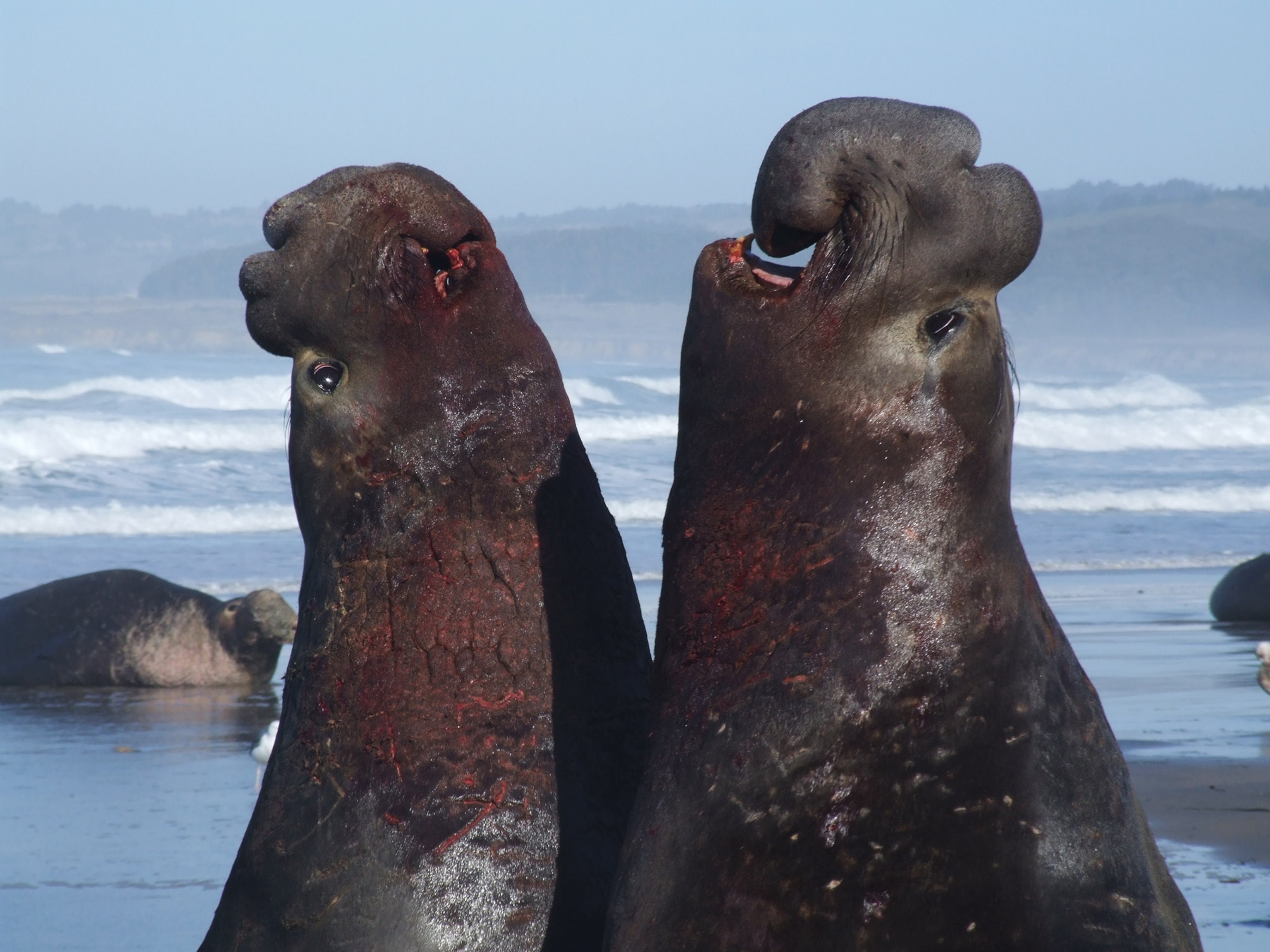Elephant Seals Recognize Their Rivals’ Voices—Hear Their Calls
Male seals learn and memorize the vocal rhythm and style of their romantic competition, a rare ability.
Romance in the world of northern elephant seals is generally rough going.
Males weighing upwards of 4,000 pounds duke it out in bloody battles to establish themselves as alphas. These males control access to females—in part by using a complex set of vocalizations—while beta males are generally left in the dust.
“When we saw all of the males calling to each other, we hypothesized they might be communicating about their size and ability to fight,” says Nicolas Mathevon, an animal acoustics researcher at the University of Lyon and Saint Etienne in France.
While observing the animals at northern California's Año Nuevo State Park, Mathevon and colleagues noticed the beta males recognized the “voices” of their dominant male counterparts and would run away when they heard them.
But the scientists wondered what spurred this recognition.
According to a new study, male elephant seals can remember and understand distinctive patterns of another male seal's voice and then make decisions accordingly.
They are the only known species other than humans that can do this, according to the study, published July 20 in the journal Current Biology.
Loud and Clear
Male elephant seals "produce unique pulsed vocal signals—the opposite of melodic bird song," says Andrea Ravignani, an animal acoustics expert at the Seal Rehabilitation and Research Centre in the Netherlands.
"It is the sound that’s made if you tap on an Australian didgeridoo,” says Ravignani, who was not involved in the study. Females northern elephant seals also make calls to warn rivals and communicate pulses; they are of lower frequency and pulse than that of males.
Listen to the alpha male's call.
The calls of mature male elephant seals are also distinctive in their rhythm and tone quality (also called timbre), and do not change. “They communicate their individual identity. Their calls are like fingerprints,” explains Mathevon.
Mathevon and colleagues observed the California seals for months, recording each of their distinctive calls and mapping out the structure of the colony.
Once they understood the complex dynamics of the seal colony, the researchers played the recorded calls of the dominant seals to the more subordinate animals to see how they would react. (Watch an upclose video of penguins and elephant seals.)
Flop Around
When the beta males heard the calls of the alphas, or in some cases, more dominant betas, they flopped away in fear. To figure out which feature of the call spurred the recognition and scared them off, Mathevon altered the acoustic properties of the calls.
“If we only modified the tempo slightly, we observed no difference,” says Mathevon, explaining the lesser males still fled the scene. “If we made a bigger change in the tempo, the tested males stopped reacting… they had no reaction to an unfamiliar voice.” (Also see "Bats Can Recognize Each Other’s Voices.")
The team noticed the same pattern when timbre was modified.
The different response from the seals to vast changes in these two acoustic properties means they are recognizing, remembering, and using these characteristics of the vocalizations for social decision-making—a very unusual trait in the animal world.
Keep the Beat
So why does this matter? Mostly because it helps us understand the origins of a uniquely human love—music. (In a first, birds use tools to make music.)
“We understand why humans use language and speech, fine, but why music?” says Ravignani.
“This kind of comparative research can help us understand what kind of evolutionary pressure led to this unique feature of human existence.”
Follow Shaena Montanari on Twitter.







